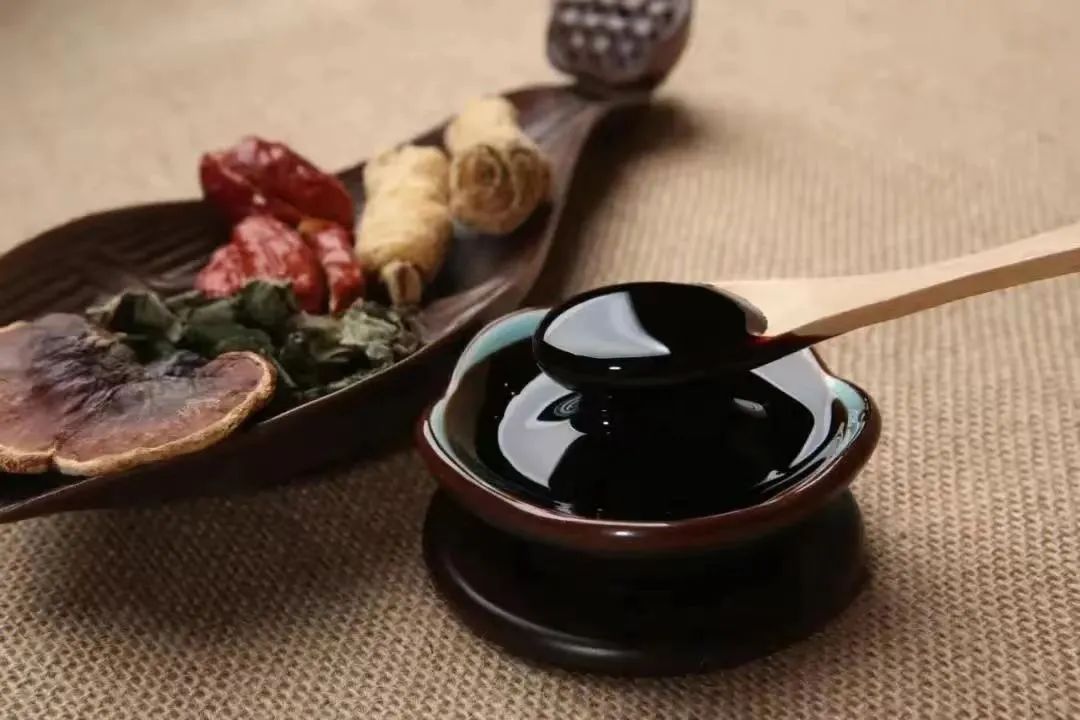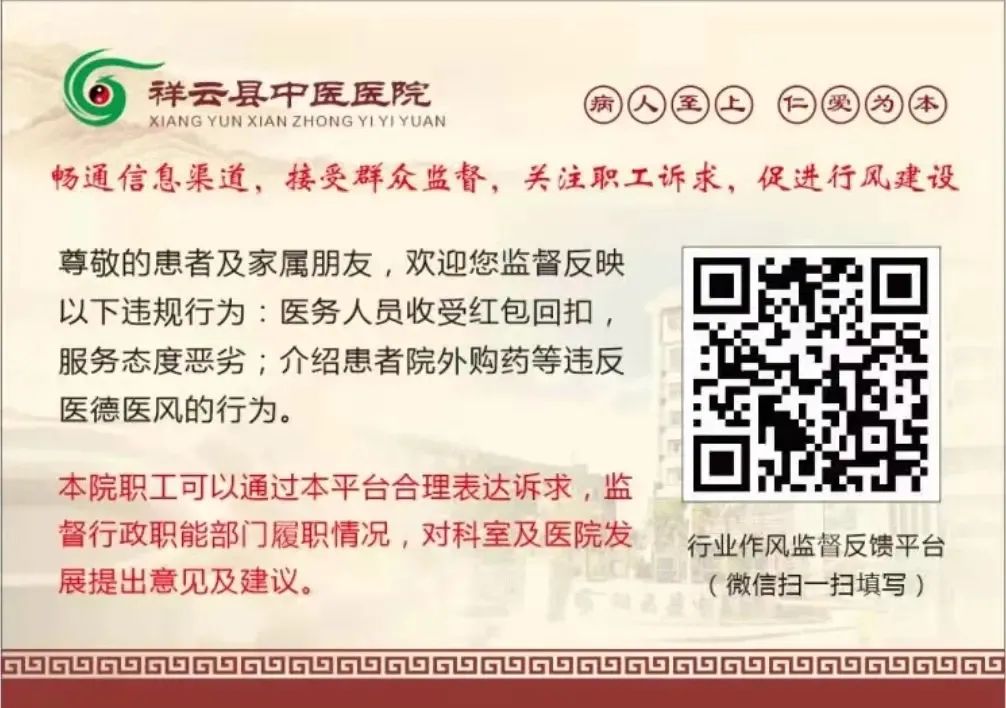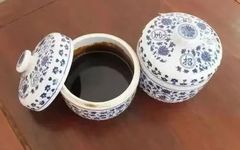Click
on
the
blue
word
★
to
follow
us
What is Gao Fang?
Gao (膏) refers to a dosage form in Traditional Chinese Medicine (TCM), which is one of the eight forms including pills (丸), powders (散), pastes (膏), elixirs (丹), wines (酒), tinctures (露), soups (汤), and tablets (锭). Gao Fang, also known as medicinal paste, is an internal preparation that has the effects of nourishing the body, anti-aging, and treating diseases by expelling pathogens.

Gao Fang is made by repeatedly decocting Chinese herbal pieces, filtering out the dregs to extract the juice, and then evaporating and concentrating it, adding sugar, honey, or donkey-hide gelatin (阿胶) to form a thick paste. Its appearance is cohesive yet not solid, with a smooth and rich texture. A good Gao Fang should be “black as lacquer” and “bright as a mirror.” Gao Fang can be tailored to individual needs, featuring personalized treatment characteristics while improving palatability. Due to its high content of active ingredients, long-lasting and stable effects, small size, ease of transport, and pleasant taste, it has become a popular tonic.
As a historically significant traditional tonic, Gao Fang has strong health-preserving effects. However, we must also have a balanced understanding of Gao Fang to ensure proper supplementation and avoid unnecessary detours.
A Timeless Tradition Passed Down Through Generations
Experts note that Gao Fang is mentioned in classic texts such as the Huangdi Neijing (《黄帝内经》), Wushi Er Bing Fang (《五十二病方》), Shanghan Zabing Lun (《伤寒杂病论》), and Zhubing Yuanhou Lun (《诸病源候论》). It evolved from early forms like the decoction of Aconitum (大乌头) and pig fat (猪膏) into a primary internal medicine during the Jin, Tang, and Song dynasties, gradually reaching a mature stage.

Since the founding of New China, Gao Fang has seen new developments, particularly in the increase of its varieties. Some historic Chinese medicine shops, such as Beijing Tongrentang, Hangzhou Huqingyutang, Shanghai Lei Yunsang, Tong Hanchun Tang, and Cai Tongde Tang, have their own formulations like He Shou Wu (首乌) longevity paste, Eight Immortals longevity paste, Baoshen paste, and Ren Shen Lu (人参) deer antler paste, each with unique preparation methods and widespread clinical applications, gaining a certain reputation both domestically and internationally. Many renowned physicians skilled in Gao Fang have extensive experience in formulating and using these pastes for disease prevention and treatment. For instance, Qin Bowei has been effective in using Gao Fang, while Pu Fuzhou prefers Gao Wan (膏丸) for chronic disease management, with numerous clinical successes. Modern masters like Ding Ganren and Yan Dexin are also adept at treating with Gao, showcasing distinctive styles and influence. In 1984, the Longhua Hospital affiliated with Shanghai University of Traditional Chinese Medicine pioneered the Gao Fang outpatient service, initiating personalized Gao Fang customization. Today, the development of Gao Fang is thriving, with a growing trend in provinces like Jiangsu, Zhejiang, and Guangdong. Cities such as Beijing, Tianjin, Hebei, Shandong, Liaoning, Jilin, and Heilongjiang have also begun to customize Gao Fang, reflecting a general trend of “moving north and west.”
Supplementing Deficiencies and Treating Diseases: The Three Distinctions
The renowned modern TCM expert Qin Bowei clearly stated in his Gao Fang Encyclopedia that “Gao Fang is not merely a supplement; it embodies the principle of addressing both deficiency and disease.” Experts explain that Gao Fang serves a dual purpose: “addressing deficiency” (补虚) and “treating disease” (疗疾). Deficiency can lead to disease, and Gao Fang can be used for both chronic, stubborn, and consumptive conditions. Unlike other tonics, Gao Fang combines supplementation with treatment, integrating nourishment, regulation, therapy, and rehabilitation, making it the best method for holistic regulation and personalized treatment.
In prescribing Gao Fang, experts emphasize the three distinctions: distinguishing disease, syndrome, and constitution.
Distinguishing Disease: Recognizing the disease involves understanding the entire process of its occurrence and development, which helps identify potential pathological changes throughout the disease process, allowing for a comprehensive grasp of the patient’s condition and guiding subsequent prescriptions. Clinically, Gao Fang is suitable for managing chronic diseases affecting the five organs, such as chronic bronchitis, hypertension, coronary heart disease, diabetes, chronic gastritis, chronic nephritis, osteoarthritis, anemia, infertility in both men and women, and recovery after surgery. The preparation of such Gao Fang should adhere to the principle of combining treatment and nourishment.
Distinguishing Syndrome: Identifying the syndrome type is based on TCM theory, using traditional TCM thinking to collect clinical data and conduct a comprehensive evaluation through the four diagnostic methods. Clinically, different syndrome types of the same disease require different herbal selections for Gao Fang. For example, in gynecological menstrual disorders, if the symptoms include late menstruation and low blood volume, and the syndrome is identified as deficiency of essence and blood, the Gao Fang should focus on nourishing the organs and regulating blood flow, using herbs like Goji Berries (枸杞子), Rehmannia (熟地黄), Mulberries (桑椹子), and wine-prepared Polygonatum (酒黄精), along with Chuanxiong (川芎) and Xiangfu (香附) for invigorating blood circulation. If the syndrome is identified as Yang deficiency with cold and blood stasis, the Gao Fang should focus on warming the meridians and assisting Yang to promote blood circulation, using herbs like Cuscuta (菟丝子), Cinnamon (桂枝), and Salt-prepared Xianmao (盐仙茅), along with Peach Kernel (桃仁) and Safflower (红花) for invigorating blood and dispelling stasis. However, if menstrual disorders are accompanied by symptoms of cold and fever, Gao Fang should not be used regardless of the syndrome type.
Distinguishing Constitution: TCM constitution identification focuses on the individual’s constitution, understanding the overall elements of health and disease and individual differences based on the characteristics of different constitutions. This allows for the formulation of prevention and treatment principles and the selection of appropriate treatment, prevention, and health maintenance methods, implementing “tailored interventions.” The preparation of Gao Fang must also follow this principle, with individualized prescriptions prepared separately for each person, meeting the needs of TCM clinical treatment while ensuring effective and safe use of herbs. For example, for elderly patients with deficiency of Qi and blood, regular consumption of Gao Fang can not only nourish Qi and blood but also delay aging and promote longevity.
Despite Its Benefits, Do Not Forget the Contraindications
“Although Gao Fang is beneficial, it is not suitable for everyone, nor can it be taken indiscriminately. There are many contraindications to consider,” experts emphasize. When using Gao Fang, safety and efficacy must be prioritized, and contraindications must be taken seriously. Contraindications include not only the “eighteen oppositions” and “nineteen aversions” in herbal compatibility but also contraindications for tonic pastes, pregnancy, and during medication.
Contraindications for Tonic Pastes
As elderly patients often present with deficiency syndromes, tonic pastes are commonly used. However, specific points must be noted during application:
Prevent “closing the door to the enemy”: Do not use tonic pastes too early when external pathogens are still present, as this may leave the pathogens unresolved. If necessary, tonic ingredients can be added to expel pathogens while supporting the body. Additionally, tonics should not conflict with Qi and blood; avoid excessive supplementation without considering the circulation of Qi and blood.
Prevent “deficiency not receiving supplementation”: For general chronic deficiency patients, only gradual nourishment is advisable, not sudden supplementation. Tonic pastes can include ingredients that assist in digestion to avoid causing stagnation.
Prevent “damaging Yang and depleting fluids”: Yang deficiency should avoid cold and excessive supplementation to prevent further Yin damage; Yin fluid deficiency should avoid warming tonics to prevent fire from injuring Yin.
Pregnancy Contraindications
During pregnancy, certain herbs may have abortifacient effects, potentially leading to miscarriage. Therefore, careful selection of herbs is crucial during clinical practice, paying attention to pregnancy contraindications.
Medication Contraindications
First, dietary restrictions are necessary. To achieve therapeutic goals, patients must avoid certain foods during medication. For example, when taking Ginseng paste, avoid radishes; when taking He Shou Wu paste, avoid pig and sheep blood and iron supplements; when taking nourishing pastes, avoid tea. Generally, during medication, avoid raw, cold, greasy, spicy, and hard-to-digest foods.
Secondly, rational use is essential. “One herb, one nature; a hundred diseases, a hundred formulas.” Each Gao Fang has its unique functions, but regardless of the type, it can only treat specific conditions and cannot be used indiscriminately. This highlights that tonic pastes must not be misused; incorrect use can be harmful rather than beneficial. For conditions with both Yin and Yang deficiency, Qi and blood insufficiency, and multiple diseases co-occurring, careful observation and analysis are necessary during diagnosis and treatment, with cautious selection of formulas and rational use of herbs to achieve optimal results, avoiding blind prescriptions and inappropriate supplementation.

Source丨China Traditional Chinese Medicine News
Editor丨Xue Qingxi
Reviewer丨Qin Bin
Final Review丨Liao Yinhua



